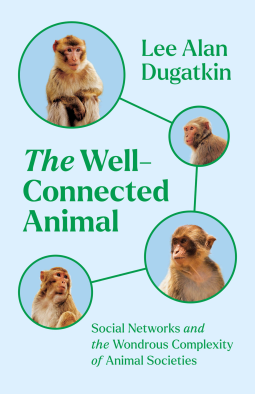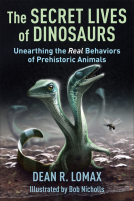
The Well-Connected Animal
Social Networks and the Wondrous Complexity of Animal Societies
by Lee Alan Dugatkin
This title was previously available on NetGalley and is now archived.
Send NetGalley books directly to your Kindle or Kindle app
1
To read on a Kindle or Kindle app, please add kindle@netgalley.com as an approved email address to receive files in your Amazon account. Click here for step-by-step instructions.
2
Also find your Kindle email address within your Amazon account, and enter it here.
Pub Date May 15 2024 | Archive Date May 01 2024
Talking about this book? Use #WellConnectedAnimal #NetGalley. More hashtag tips!
Description
An engaging exploration of the wondrous social webs that permeate life in animal societies around the world.
It’s all about who you know. Whether vampire bats sharing blood meals for survival, field crickets remembering champion fighters, macaque monkeys forming grooming pacts after a deadly hurricane, or great tit birds learning the best way to steal milk—it pays to be well connected.
In this tour of the animal kingdom, evolutionary biologist Lee Alan Dugatkin reveals a new field of study, uncovering social networks that existed long before the dawn of human social media. He accessibly describes the latest findings from animal behavior, evolution, computer science, psychology, anthropology, genetics, and neurobiology, and incorporates interviews and insights from researchers he finds swimming with manta rays, avoiding pigeon poop, and stopping monkeys from stealing iPads. With Dugatkin as our guide, we investigate social networks in giraffes, elephants, kangaroos, Tasmanian devils, whales, bats, and more. From animal networks in Australia and Asia to Africa, Europe, and the Americas, The Well-Connected Animal is an eye-opening exposé of wild friends, enemies, and everything in between.
Advance Praise
"An engaging exploration of the interconnectedness of the animal world. . . . An entertaining tour of what we learn as we eavesdrop on the non-human conversations all around us." ― Kirkus Reviews
"Studies how animals share information and resources through socializing, including how great tit birds learn to break into milk bottles and how vampire bats split meals." ― Publishers Weekly, Spring 2024 Adult Preview: Science
“One of the most talented biologists of our time lends fascinating insight into the most important part of our existence. By exploring the origins of our social connections, Dugatkin uncovers a world of cooperation, communication, and bonding in the animal kingdom that ultimately leads to ours. A beautifully written adventure into the secrets of the natural world.” -- Brian Hare, coauthor of "The Genius of Dogs"
“For many years, Dugatkin has been one of my 'go-to-guys' for learning about cutting edge research in animal behavior. The Well-Connected Animal is yet another one of his extremely thoughtful books, this time outlining what we know about social networks in diverse species, how the research is conducted, and where future studies should best focus. I’m sure many will be pleasantly surprised by the flexible, intricate, and varied social networks that many nonhumans form and use in their daily lives.” -- Marc Bekoff, author of "Dogs Demystified" and "The Emotional Lives of Animals"
“Long before the invention of Facebook and Twitter, animals discovered the value and peril of social networking. With engaging prose and sweeping scope, The Well-Connected Animal explores the intricate interactions that characterize animal societies and the equally compelling story of the scientists who study them.” -- Jonathan B. Losos, author of "The Cat’s Meow" and "Improbable Destinies"
“Scrupulously scientific but highly accessible. . . . A stunningly provocative reflection.” -- David P. Barash ― Wall Street Journal, on "Power in the Wild"
“Sparkling. . . . A parable of the lessons that can emerge from unfettered science, if we have the courage to let it unfold.” -- Marlene Zuk ― New York Times Book Review, on "How to Tame a Fox (and Build a Dog)"
Available Editions
| EDITION | Other Format |
| ISBN | 9780226818788 |
| PRICE | $29.00 (USD) |
| PAGES | 264 |
Available on NetGalley
Average rating from 7 members
Readers who liked this book also liked:
Leigh Stein
General Fiction (Adult), Humor & Satire, Women's Fiction
Dean R. Lomax; Robert Nicholls
Nonfiction (Adult), Outdoors & Nature, Science
Maureen Johnson; Jay Cooper
Entertainment & Pop Culture, Mystery & Thrillers
Amelia Thomas
Biographies & Memoirs, Nonfiction (Adult), Outdoors & Nature
Ross Montgomery
General Fiction (Adult), Historical Fiction, Mystery & Thrillers


















